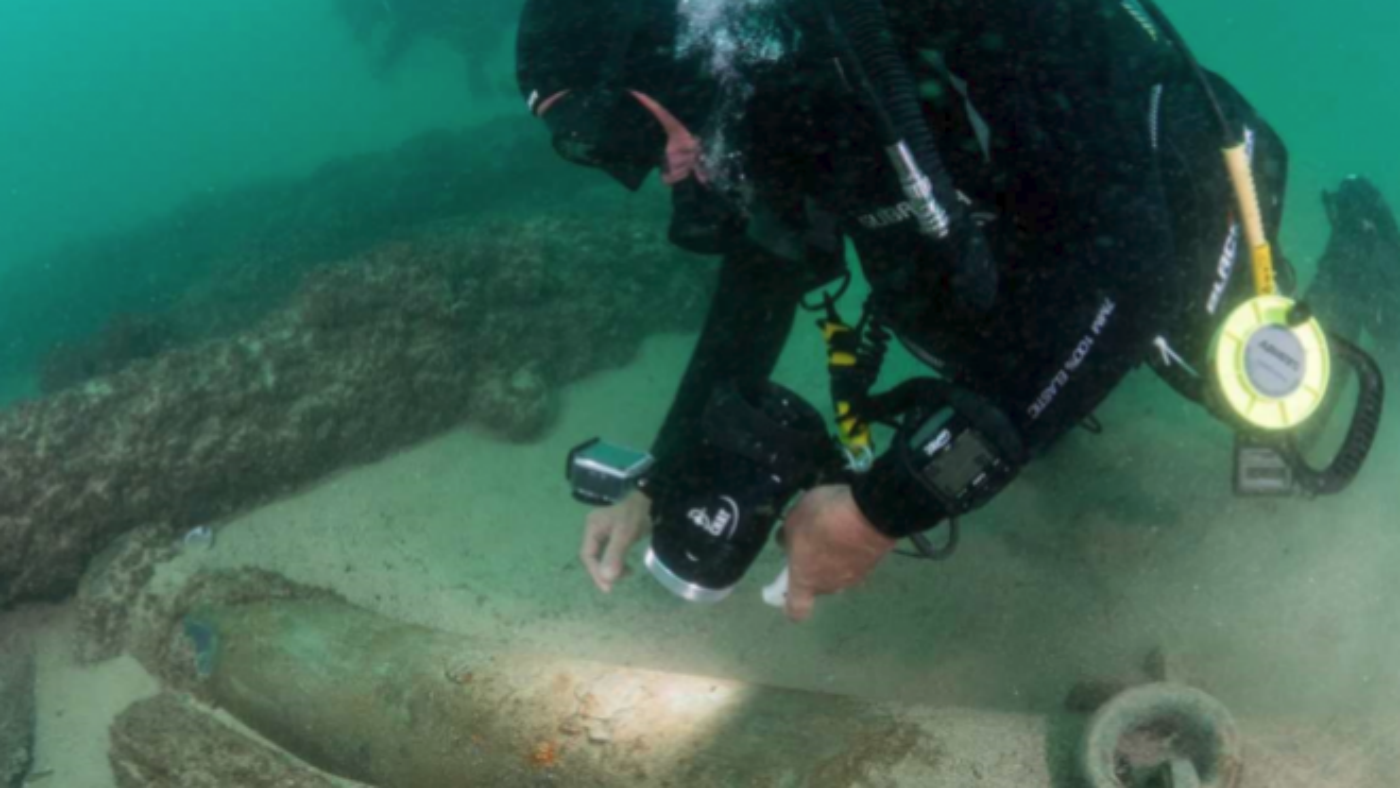What is inside the 400-year-old shipwreck found near Portugal?
Cargo of wrecked trading ship is ‘very well-preserved’, say archaeologists

Experts are hailing a 400-year-old shipwreck found off the Portuguese coast as “the discovery of the decade” due to its hoard of historical treasures.
Archaeologists spotted the 100m-long wreckage on the sea bed near Cascais, a popular resort on the western fringe of Lisbon, earlier this month.
Based on clues from the cargo, archaeologists believe the as-yet-unidentified trading ship was returning home from a voyage to India laden with valuable spices when it sank in the late 16th or early 17th century.
The Week
Escape your echo chamber. Get the facts behind the news, plus analysis from multiple perspectives.

Sign up for The Week's Free Newsletters
From our morning news briefing to a weekly Good News Newsletter, get the best of The Week delivered directly to your inbox.
From our morning news briefing to a weekly Good News Newsletter, get the best of The Week delivered directly to your inbox.
“From a heritage perspective, this is the discovery of the decade,” said project director Jorge Freire.
Initial examinations have revealed that the contents of the ship are “very well-preserved” and offer fresh insight into maritime history during the age of the fabled spice route.
“This is a great discovery and its greatness lies in what it, and the artefacts, can tell us about the cultural landscape,” he said.
So what has been recovered so far?
A free daily email with the biggest news stories of the day – and the best features from TheWeek.com
Spices: Traces of peppercorns found in the wreckage help identify the purpose of the vessel. Archaeologists believe the ship was wrecked between 1575 and 1625, “when Portugal’s spice trade with India was at its peak”, Reuters reports.
Chinese porcelain: Pieces of Chinese ceramics found at the wreck site have been identified as belonging to the Wanli period, which lasted from 1573 to 1619, helping researchers narrow down the timeframe in which the shipwreck occurred, The Guardian reports.
Cannons: One of the most exciting finds, the ship’s artillery includes nine bronze cannons engraved with the Portuguese coat of arms.
Cowry shells: Seemingly innocuous, the small, jagged-edged shells carried by the vessel hide a dark chapter in Portuguese history. The country played a key role in the early days of the Atlantic slave trade, when cowry shells were frequently used as currency between slave traders along the African coast, says Reuters.
-
 The Trump administration says it deports dangerous criminals. ICE data tells a different story.
The Trump administration says it deports dangerous criminals. ICE data tells a different story.IN THE SPOTLIGHT Arrest data points to an inconvenient truth for the White House’s ongoing deportation agenda
-
 Ex-FBI agents sue Patel over protest firing
Ex-FBI agents sue Patel over protest firingspeed read The former FBI agents were fired for kneeling during a 2020 racial justice protest for ‘apolitical tactical reasons’
-
 The real tragedy that inspired ‘Hamlet,’ the life of a pingpong prodigy and the third ‘Avatar’ adventure in December movies
The real tragedy that inspired ‘Hamlet,’ the life of a pingpong prodigy and the third ‘Avatar’ adventure in December moviesThe Week Recommends This month’s new releases include ‘Hamnet,’ ‘Marty Supreme’ and ‘Avatar: Fire and Ash’
-
 Femicide: Italy’s newest crime
Femicide: Italy’s newest crimeThe Explainer Landmark law to criminalise murder of a woman as an ‘act of hatred’ or ‘subjugation’ but critics say Italy is still deeply patriarchal
-
 Brazil’s Bolsonaro behind bars after appeals run out
Brazil’s Bolsonaro behind bars after appeals run outSpeed Read He will serve 27 years in prison
-
 Americans traveling abroad face renewed criticism in the Trump era
Americans traveling abroad face renewed criticism in the Trump eraThe Explainer Some of Trump’s behavior has Americans being questioned
-
 Nigeria confused by Trump invasion threat
Nigeria confused by Trump invasion threatSpeed Read Trump has claimed the country is persecuting Christians
-
 Sanae Takaichi: Japan’s Iron Lady set to be the country’s first woman prime minister
Sanae Takaichi: Japan’s Iron Lady set to be the country’s first woman prime ministerIn the Spotlight Takaichi is a member of Japan’s conservative, nationalist Liberal Democratic Party
-
 Russia is ‘helping China’ prepare for an invasion of Taiwan
Russia is ‘helping China’ prepare for an invasion of TaiwanIn the Spotlight Russia is reportedly allowing China access to military training
-
 Interpol arrests hundreds in Africa-wide sextortion crackdown
Interpol arrests hundreds in Africa-wide sextortion crackdownIN THE SPOTLIGHT A series of stings disrupts major cybercrime operations as law enforcement estimates millions in losses from schemes designed to prey on lonely users
-
 China is silently expanding its influence in American cities
China is silently expanding its influence in American citiesUnder the Radar New York City and San Francisco, among others, have reportedly been targeted